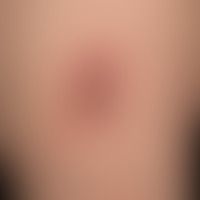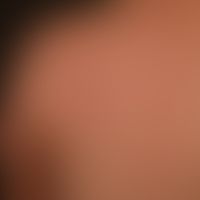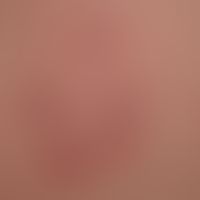Pseudolymphomas of the skin (overview) Images
Go to article Pseudolymphomas of the skin (overview)
Pseudolymphoma. Type lymphadenosis cutis benigna

pseudolymphomas of the skin: since 6-8 moants of known, slowly growing, completely symptomless nodules. no previous stabbing event known. histological: organically structured (ectopic) mature lymphatic tissue with lymph follicles. therapy: excision in toto.

Slowly growing, completely asymptomatic skin alteration after an insect bite which the patient described as relevant.histological: no evidence ofcutaneous lymphoma.

Pseudolymphoma of the skin: non-itchy, surface-smooth, reddish-brown papules and plaques on the left shoulder blade region; histological: non-clonal lympho-reticular proliferation, without epidermotropy.

Pseudolymphoma of the skin: non-itchy, surface-smooth, reddish-brown papules and plaques on the left scapula region; histological: non-clonal lympho-reticular proliferate, without epidermotropy; detail view.

Pseudolymphomas of the skin. multiple, chronically dynamic, for one year existing, increasing in size and number of single lesions, 0.1-1.0 cm in size, clearly increased in consistency, symptom-free, red, smooth papules and plaques. Comment: in disseminated pseudolymphomas close clinical monitoring is indicated (development of cutaneous B-cell lmyphoma possible)



Pseudolymphoma of the skin: non-itchy, surface-smooth, reddish-brown papules, nodules and plaques on the inner side of the thigh Histological: non-clonal lympho-reticular proliferate, without epidermotropy

Pseudo-lymphoma of the skin.

Pseudolymphoma: after tattooing.

Pseudolymphomas of the skin; broad acanthosis of the epidermis; dense nodular lymphocytic infiltrate in the entire dermis, which is incised here.

Pseudolymphomas of the skin. Polymorphic infiltrate of mature lymphocytes, histiocytes and eosinophilic leukocytes. Few plasma cells.

Pseudolymphoma of the skin with foreign body.